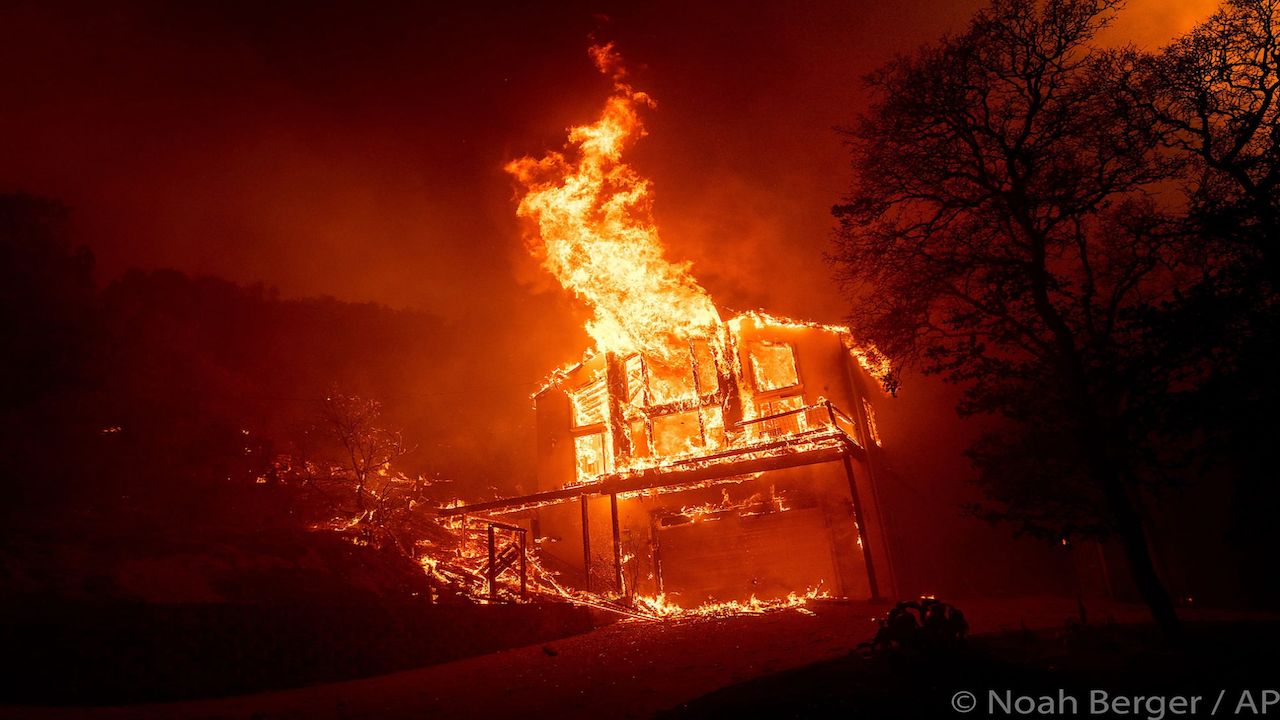Destructive wildfires occur every year across the state, and unfortunately, the situation is only getting worse as time goes on. After a horrendous fire season in 2020, preparing for a wildfire is extremely important for those in high-risk areas.
With firefighters and resources often stretched thin during peak fire season, it is your responsibility to do what you can to protect yourself, your family and your home — not only now, but for years to come. It’s what Cal Fire calls “Ready, Set, Go!”
This three-step preparedness process encourages people to get themselves and their homes ready ahead of time, keeping up with those practices while monitoring significant threats, and evacuating when danger is near.
This week, I am going to focus on the “ready” phase in this three-step process.
Getting ready before wildfire season is the first piece of the puzzle, especially if you live in a wildfire-prone area. This should take place months before fires become active, and these practices should be maintained all year long.
A big part of this process involves assessing your property, taking note of any changes that need to be made, and putting that into motion.
This begins with creating defensible space around the perimeter of your home, which will act as your first line of defense against wildfires and slow any spread. It also provides safe access for firefighters to better defend your home.
When you create and maintain defensible space, you are giving your home a much higher chance of survival from wildfires that could otherwise burn it to the ground.
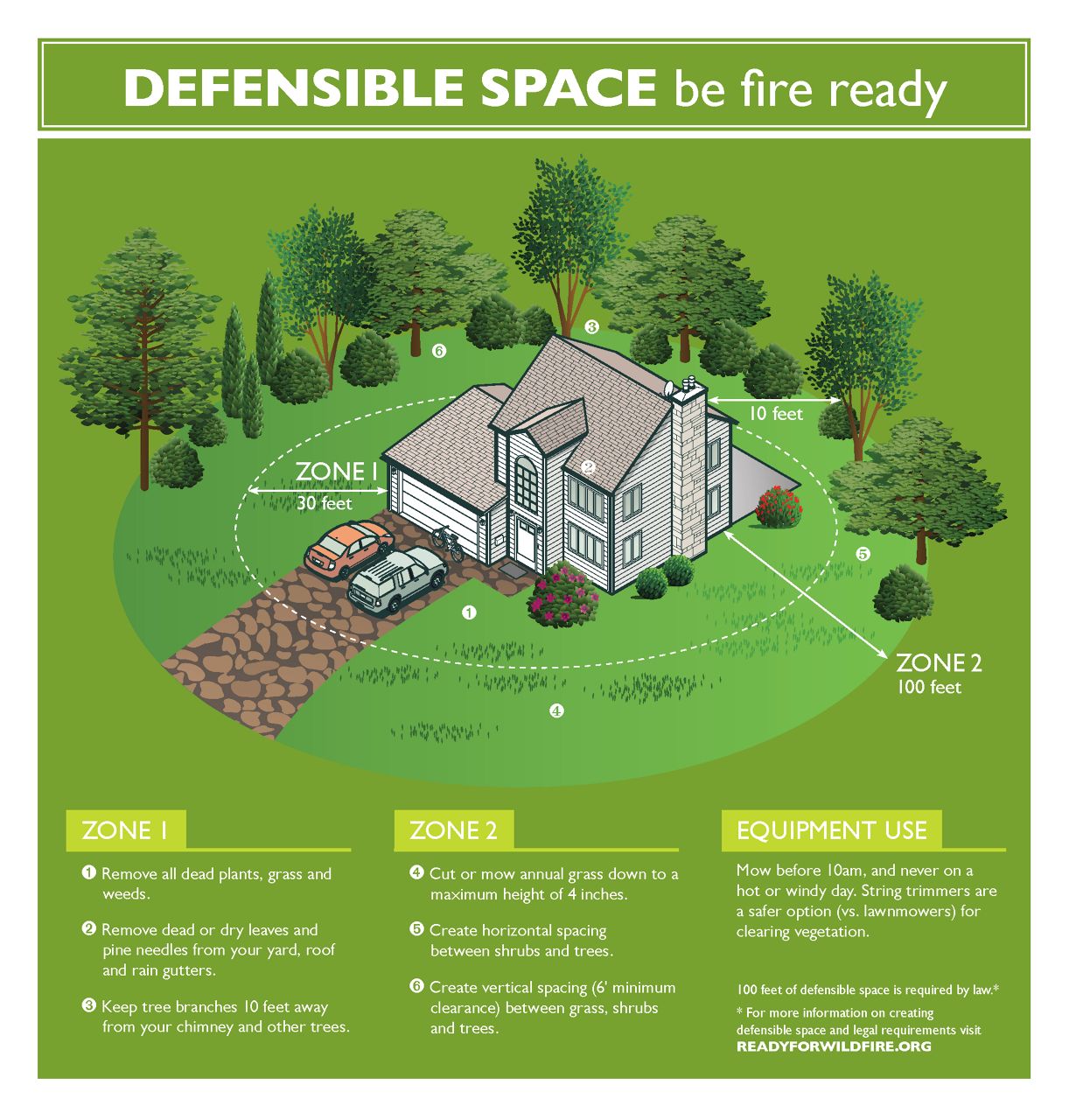
Defensible space can be split into multiple zones — let’s break down each one.
The goal for this area is to prevent any chance for fire ignition, plus reduce and space out flammable vegetation.
Using fire-resistant materials on your home, deck, and roof is very important. There are also ways to make fireproof additions to your home at any point, such as installing fire-resistant windows (double-pane and tempered glass), adding steel frames around each window, and covering exterior walls with non-flammable materials (especially if your home is made of wood).
Installing spark arrestor chimney caps is not a bad idea either.
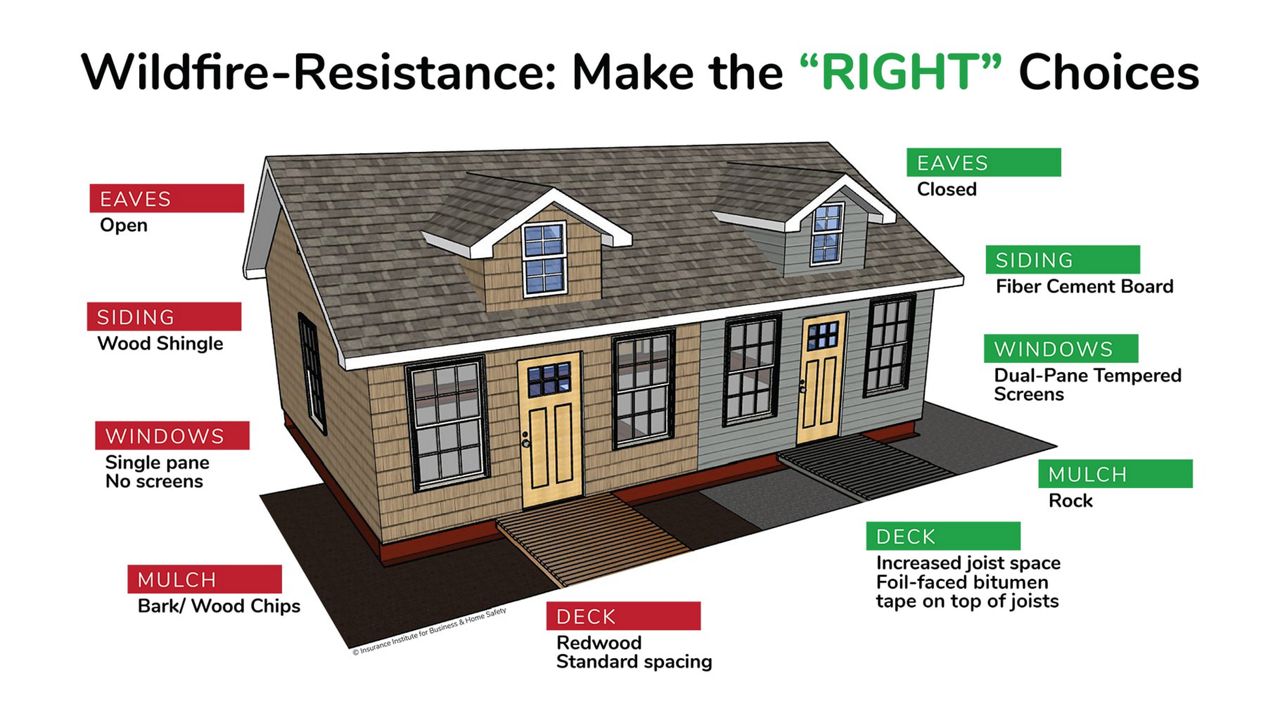
Keep the yard, deck, roof, and gutters tidy and free of any leaves or pine needles — they can act as embers that may cause your house to catch fire.
Instead of using bark or wood chips as mulch around the foundation of your house, use non-combustible items like stones or rocks. Also, avoid placing plants in this space.
The closer to your home, the fewer plants you want. This will help cut off the fire path, keeping it away from the actual structure.
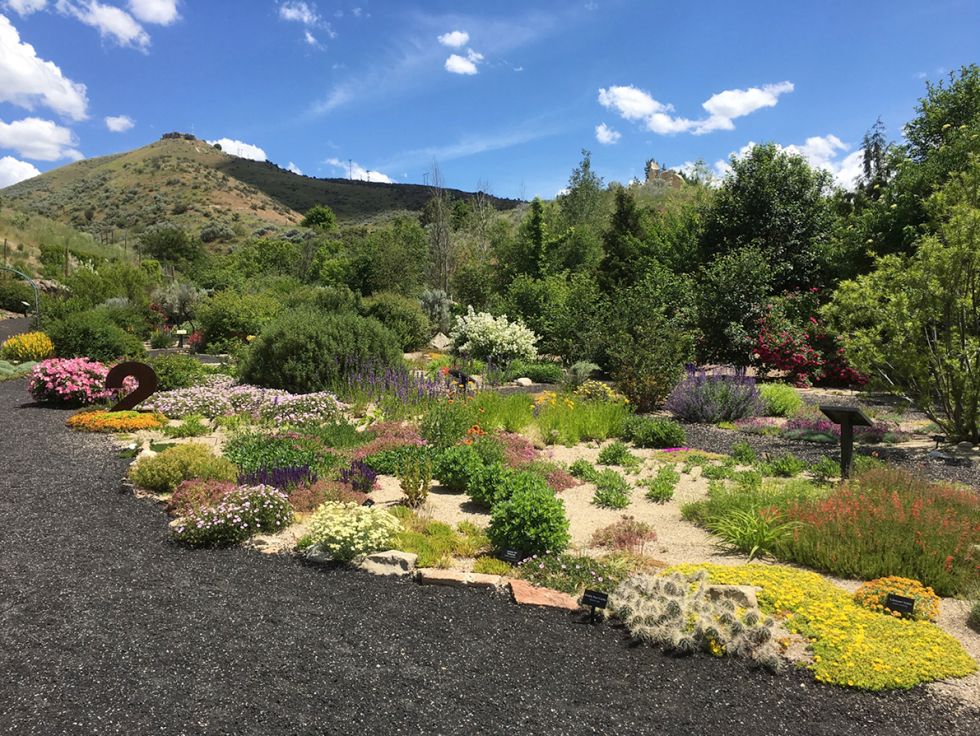
You will want to think carefully about the plants you use between five-to-30 feet around the house — otherwise known as firescaping. The best choice is low-growing and fire-retardant plants such as perennials, annuals, and groundcovers.
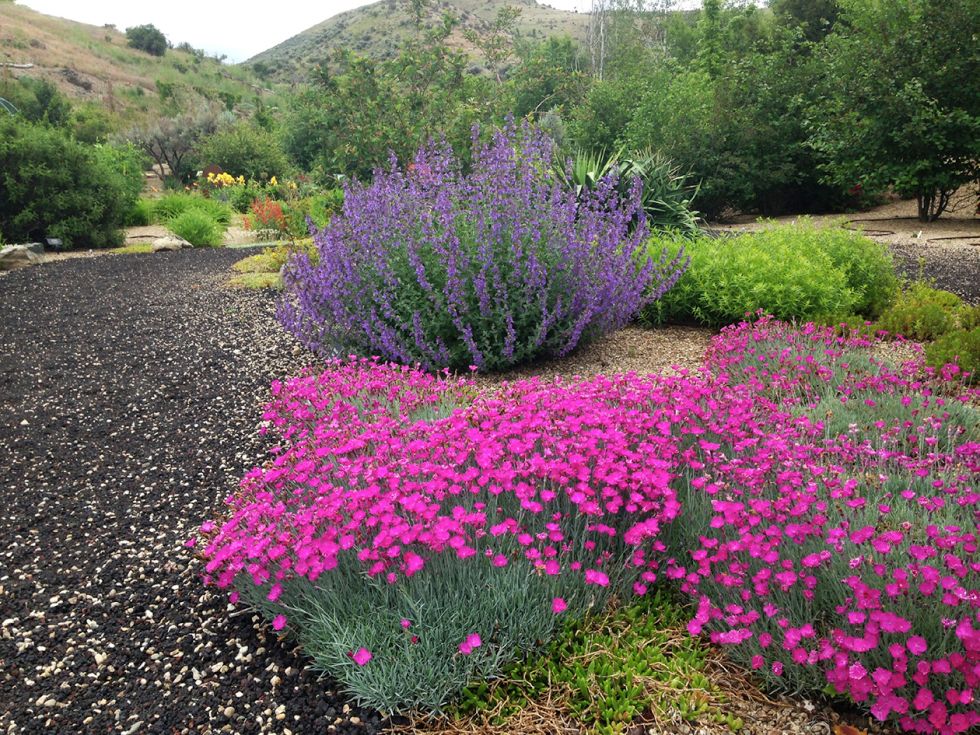
Cal Fire recommends selecting fire-resistant shrubs like hedging roses, bush honeysuckles, currant, cotoneaster, sumac, and shrub apples. They also recommend planting hardwood, maple, poplar, and cherry trees over pine, fir, and other conifer trees, which are more flammable.
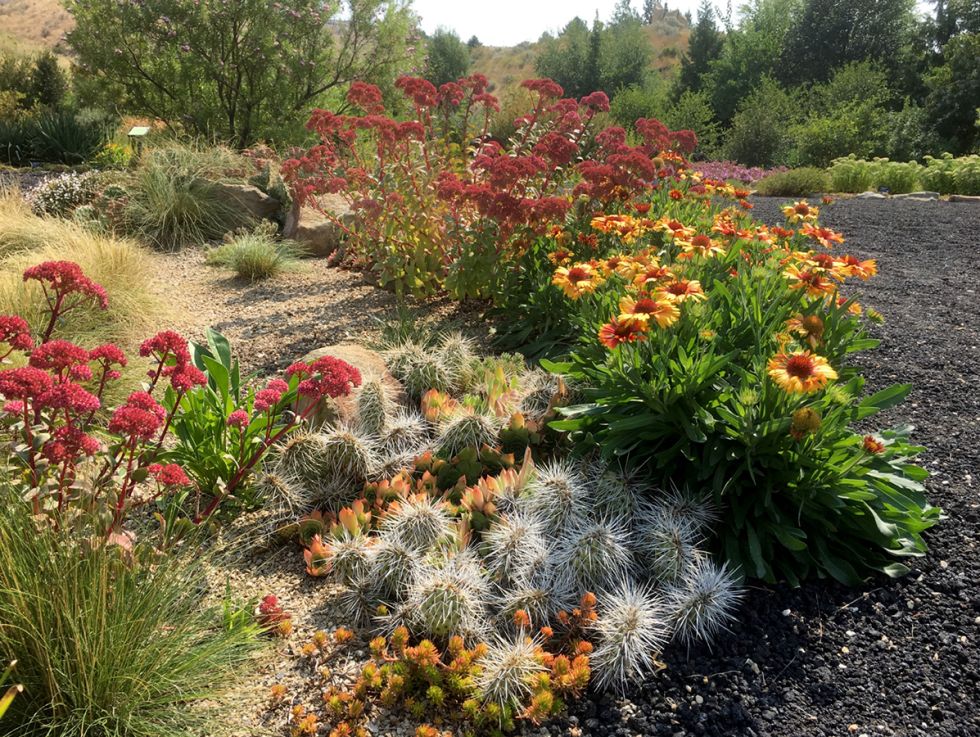
Lawns are another great choice, as long as you water them frequently and keep the grass (and weeds) tamed. They should never grow higher than four inches tall.
The lawn will act as a fuel break to slow the fire and keep it low to the ground. The goal is to keep the fire as low to the ground as possible and prevent it from climbing higher.
To do this, it’s best to prune any broken tree limbs and dead or low hanging branches within 6-to-10 feet from the ground.
As always, remove, trim, or clean up any flammable brush-like needles, leaves, cones, twigs, and branches to also slow fire spread. Make sure to then recycle or dispose of yard debris properly.
There are usually more plants and trees in this zone, but the key is to prune and space them out correctly, so they act as a barrier that will help slow the spread of a fire.
Individual trees should be at least 10 feet apart from each other, and they should also be pruned regularly.
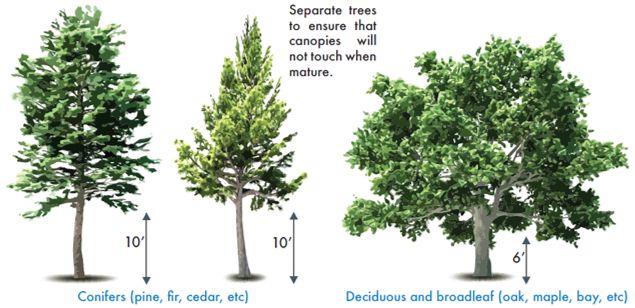
Some other tips include choosing fire-resistant furniture for outdoor spaces, keeping piles of firewood at least 30 feet away from your home (keeping brush/weeds over 10 feet away from that and other combustible items), and making sure items like barbecues and fire pits are placed away from wood decks.
Keep driveways and other walkways clear of vegetation to allow fire trucks easy access. Plus, make sure your address is clearly marked and visible in front of your property.
Besides preparing your house, there are also some other steps you can do early on. One of those is following resources that will offer crucial information during the fire season.
You will automatically receive wireless emergency alerts about imminent fire danger in your area, similar to what you receive for an amber alert. On top of that, you can also sign up for warning systems and emergency alerts in your county and community, if that is available to you.
Bookmark Cal Fire’s incidents page.
This is a great resource for incident details on wildfires managed by Cal Fire (that are over 10 acres, within their jurisdiction, and that they provide resources for).
You can also download Cal Fire’s Ready for Wildfire app to access the same information. The app allows you to sign up and receive text messages with information about active wildfires within 20 miles of your zip code.
Some other great resources for active fire information are InciWeb and GeoMAC.
I also recommend paying close attention to the news on traditional media outlets and social media platforms.
Twitter is a great resource for quick and current updates surrounding a fire. Cal Fire does a great job of constantly updating their page with incident updates, infographics, and videos. If you search the hashtag of the name of a fire, you can track the most recent information.
On your social media accounts, follow the generic Cal Fire account, plus the one for your specific region. You may also want to follow your local county page, emergency management office, fire department, sheriff’s office, public health department, and your Caltrans district for information on road conditions, closures, and hazards.
Look out for fire weather watches and red flag warnings that may be issued in your area by the local National Weather Service office. This means weather conditions will be favorable for rapid wildfire spread and high fire danger (low humidities, strong winds, dry fuels, dry lightning potential.)
Going through these preventative measures will help you out in the long run, and it’s always better to be safe than sorry.



